Gonionemus vertens A. Agassiz, 1862Common name(s): Clinging jellyfish, Orange-striped jellyfish, Angled hydromedusa |
|
| Synonyms: | 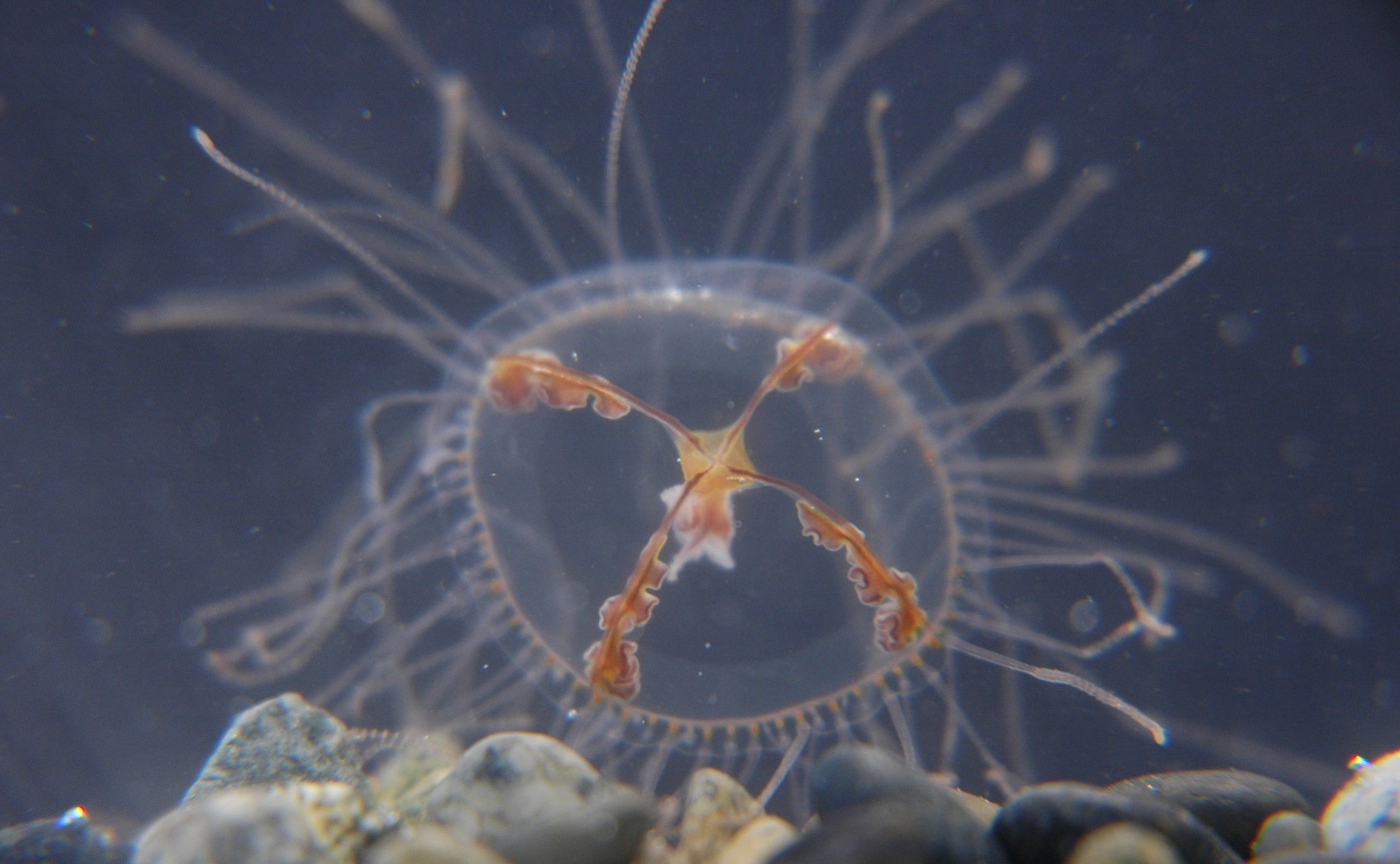 |
|
Phylum Cnidaria
Class Hydrozoa
Order Thecata (Leptomedusae)
Suborder Limnomedusae
Family Olindiasidae
|
|
| Gonionemus vertens, 2 cm diameter, found on eelgrass in Padilla Bay, WA. The 4 radial canals with attached frilly gonads, and the hanging manubrium can be seen. | |
| (Photo by: Dave Cowles, July 2007) | |
How to Distinguish from Similar Species:Eperetmus typus is also deep bell-shaped and has nematocyst rings on the tentacles but it has no adhesive pads on the tentacles and the radial canals usually have many centripetal canals.
Geographical Range: Alaska to southern California, Kamchatka, northern Japan, Arctic Ocean, N Atlantic to Cape Cod. On our Pacific coast not common south of Puget Sound but some blooms have appeared farther south such as near Santa Barbara, CA.
Depth Range:
Habitat: Attached to kelp, eelgrass, and other substrates (in summer); in at least partly protected waters.
Biology/Natural History: Feeds on small crustaceans, especially copepods. The polyp is seldom seen. The polyps of this species found in Kamchatka are highly venomous but those along our coast are not.
Older references list this species as a member of the Trachyline medusae.
This species is one that Ed Ricketts often collected for commercial
sale by his Pacific Biological Laboratories (Hedgpeth 1978, p 44)
| Return to: | |||
| Main Page | Alphabetic Index | Systematic Index | Glossary |
References:
Dichotomous Keys:Flora and Fairbanks, 1966
Kozloff 1987, 1996
Smith and Carlton, 1975
General References:
Harbo,
1999
Kozloff,
1993
McConnaughey
and McConnaughey, 1985
Wrobel
and Mills, 1998
Scientific Articles:
Hedgpeth, Joel W., 1978. The Outer Shores, Part 1: Ed Ricketts and John
Steinbeck Explore the Pacific Coast. Mad River Press, Eureka, CA
Mills, C.E., 1993. Natural mortality in NE Pacific coastal
hydromedusae: Grazing predation, wound healing and senescence.
Bulletin of Marine Science 53(1):
Singla, C.L., 1977. Fine structure of the adhesive pads of Gonionemus
vertens. Cell Tissue Res. 181(3):395-402
Westfall JA., 1970. The nematocyte complex in a Hydromedusan,
Gonionemus
vertens. Z Zellforsch Mikrosk Anat. 110(4):457-470.
Daniel,
Thomas L., 1985. Cost of Locomotion: Unsteady Medusan Swimming.
Journal of Experimental Biology 119,149-164
Web sites:
General Notes and Observations: Locations, abundances, unusual behaviors:
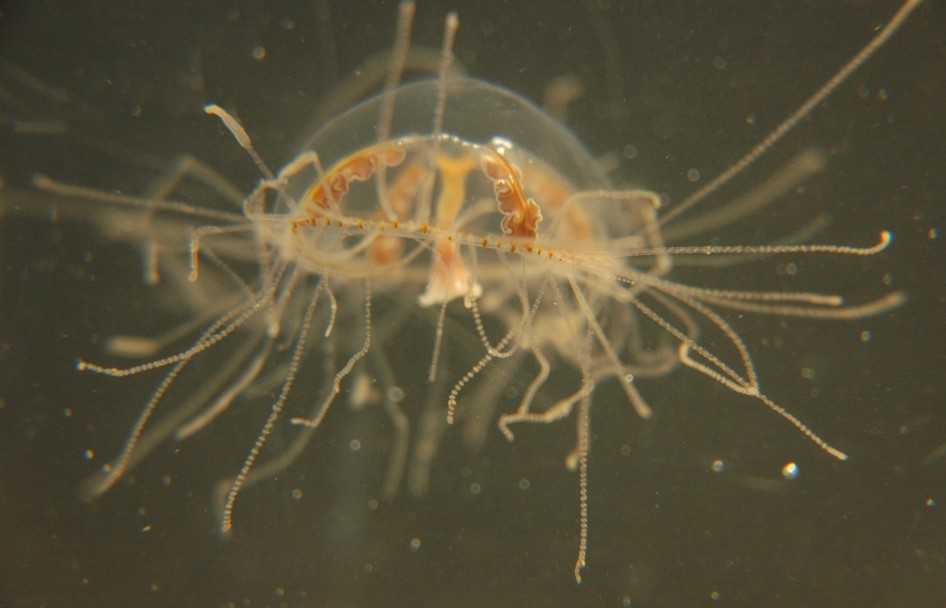
In this view of a swimming individual the kneelike articulation of
several of the tentacles
at the adhesive pad can be seen. Note the tan color on the manubrium,
the gonads, and on the tentacle
bulbs.

This closeup of several tentacles
shows the distinct nematocyst
rings and also the adhesive pads.
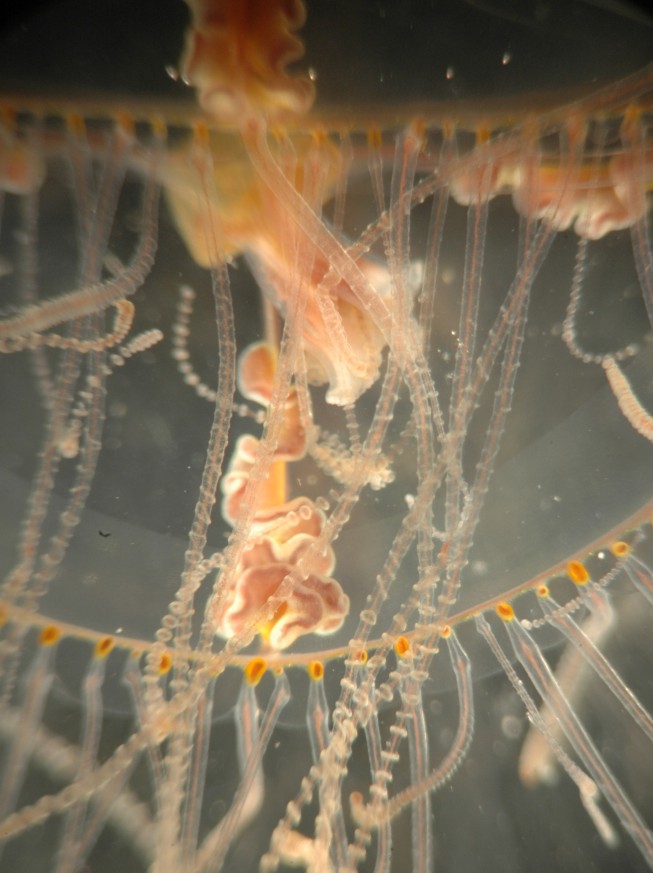
In this closeup the velum
can be clearly seen along the margin of the bell. The manubrium
is at top center, a gonad is seen along a radial
canal down through the center of the photo,
and the bell margin with velum
and single row of tentacles
with tan tentacle
bulbs is visible across the bottom third.
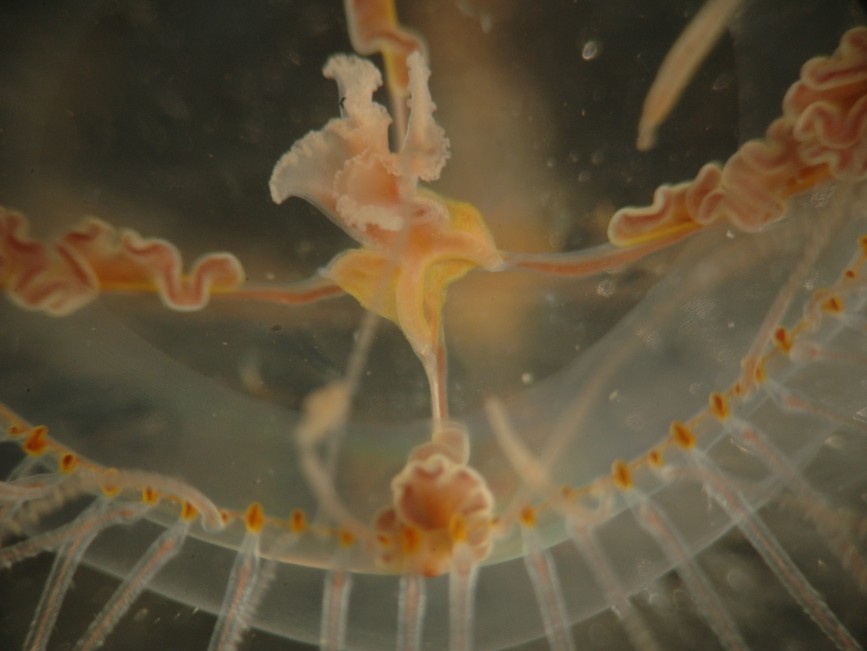
In this view of the subumbrella,
the frilly lips of the manubrium
can be seen.

Another view of the subumbrella,
showing the manubrium
and gonads. Photo by Dave Cowles, June 2020
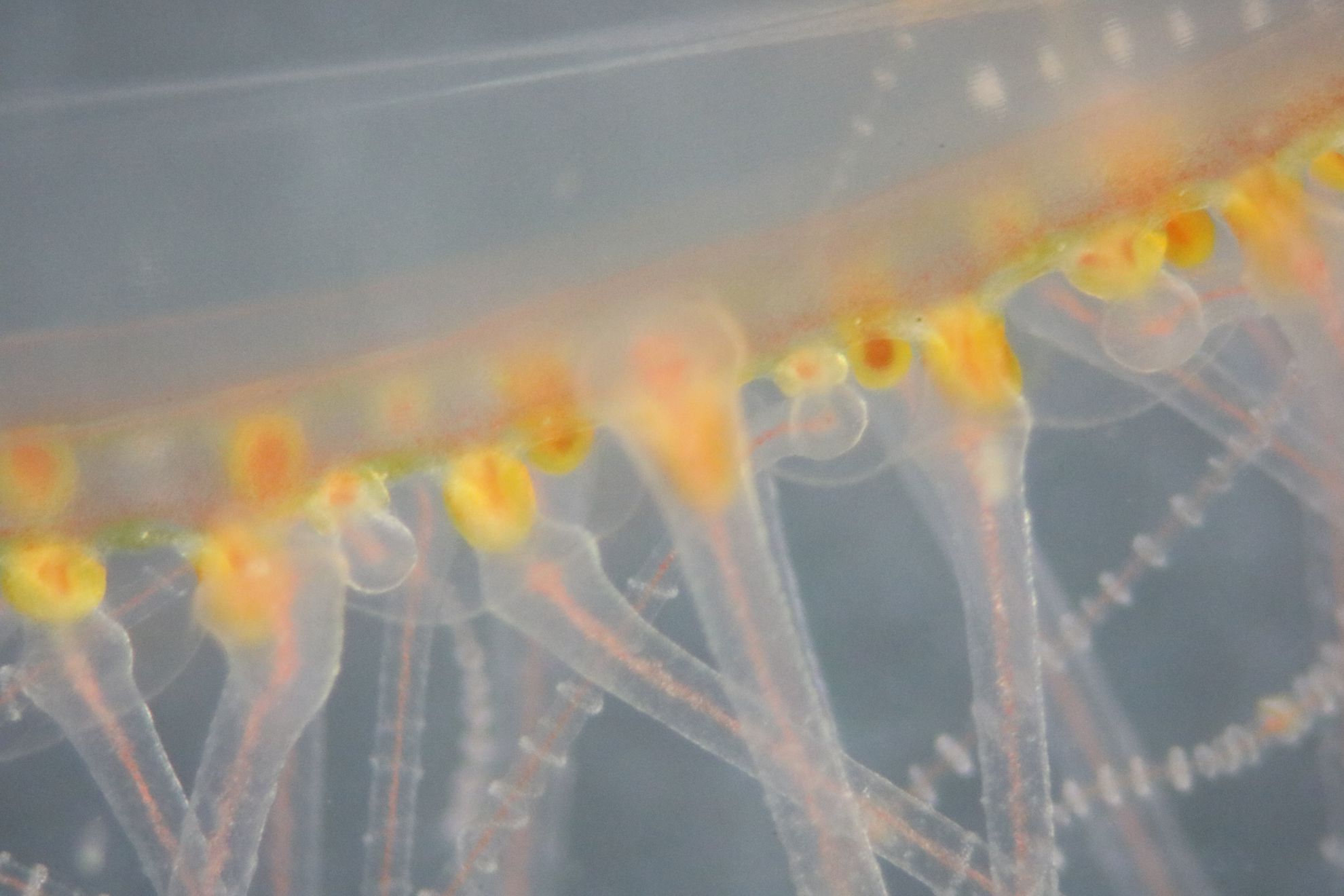
A closeup of the rim of the bell,
showing the tentacles
and tentacular
bulbs. Photo by Dave Cowles, June 2020
Authors and Editors of Page:
Dave Cowles (2007): Created original page
Jonathan Cowles (2007): Updated page with CSS